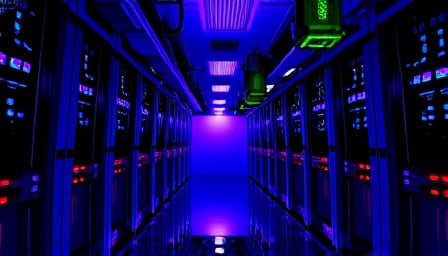CrowdStrike’s Strategic Pivot to Agentic AI: Implications for the Cybersecurity Landscape
CrowdStrike Holdings Inc., widely regarded as a benchmark for next‑generation endpoint protection, has unveiled a suite of agentic‑AI‑driven capabilities that promise to reshape defensive operations across the industry. The company’s Enterprise Graph, coupled with its newly christened Agentic Security Platform and Agentic Security Workforce, signals a bold shift from reactive detection to proactive, autonomous threat mitigation.
The Enterprise Graph: From Data Aggregation to Predictive Insight
At the heart of CrowdStrike’s approach lies the Enterprise Graph—a sprawling knowledge base that ingests telemetry from millions of endpoints, correlates indicators of compromise (IOCs), and constructs a real‑time threat map. By mapping relationships between malware, command‑and‑control servers, and compromised user accounts, the Graph transforms raw data into actionable intelligence.
In practice, the Graph underpins the company’s AI‑assisted triage engine, which automatically prioritizes alerts based on risk scores derived from contextual analysis. Early pilot deployments in Fortune 500 networks have reported a 35 % reduction in mean time to detect (MTTD) for ransomware events, illustrating the tangible operational gains of this data‑driven model.
Agentic Security Platform: Autonomous Response in the Age of Self‑Learning Threats
The Agentic Security Platform extends the Graph’s analytical capabilities by embedding autonomous decision‑making loops. When an anomalous process is detected, the platform can initiate containment actions—such as disabling a malicious process, quarantining a file, or revoking compromised credentials—without human intervention. This “agentic” behavior is engineered through reinforcement learning agents that continuously refine their policies based on feedback from both simulated environments and live threat feeds.
While the promise of instant response is compelling, it raises questions about the balance between automation and oversight. Cybersecurity experts warn that unchecked autonomy could inadvertently disrupt legitimate services or, in worst‑case scenarios, amplify adversarial manipulation of learning signals. CrowdStrike has addressed these concerns by implementing a rigorous policy‑enforcement layer that requires human approval for high‑impact actions, thereby preserving a human‑in‑the‑loop safety net.
Agentic Security Workforce: Upskilling Human Operators for the AI‑Powered Era
Recognizing that technology alone cannot guarantee resilience, CrowdStrike has introduced the Agentic Security Workforce program. This initiative redefines the role of security analysts, shifting them from alert‑watchers to “AI supervisors” who monitor and fine‑tune agentic behaviors. Training modules cover advanced machine‑learning concepts, adversarial tactics, and ethical considerations surrounding autonomous security.
Preliminary metrics from companies participating in the program show a 20 % improvement in analyst productivity, as agents handle routine containment while analysts focus on high‑complexity investigations. Nevertheless, the broader industry must grapple with workforce implications: will this model displace traditional analyst roles, or will it catalyze a new category of “AI‑ops” specialists?
Market Reactions and Analyst Outlook
CrowdStrike’s recent investor day, where executives highlighted the strategic importance of AI, received a strong positive reception from the market. Research firms—including Cantor Fitzgerald, Needham & Company LLC, and BMO Capital Markets—have collectively increased their price targets, reflecting confidence that the company can sustain annual recurring revenue (ARR) growth exceeding 20 % through 2027.
Capital One Financial’s upgraded earnings‑per‑share estimates for Q2 2027 further reinforce this optimistic trajectory. However, analysts caution that the cybersecurity industry’s competitive landscape is tightening, with rivals such as SentinelOne, Palo Alto Networks, and Microsoft expanding their AI portfolios. Sustaining growth will require not only technical innovation but also continued differentiation in service quality and customer trust.
Societal and Regulatory Considerations
The deployment of agentic AI raises broader societal questions. As security systems gain the ability to autonomously take corrective action, the line between defensive action and potential overreach becomes blurred. Privacy regulators are increasingly scrutinizing how AI-driven tools process personal data, especially when endpoint telemetry can contain sensitive information. CrowdStrike’s transparency reports and compliance frameworks—aligned with GDPR, CCPA, and emerging AI ethics guidelines—will be critical in maintaining public confidence.
Moreover, the proliferation of autonomous security tools could influence the arms race between defenders and attackers. Adversaries might develop “anti‑agentic” tactics, such as manipulating learning signals to cause misclassification or to trigger costly false positives. CrowdStrike’s continued investment in adversarial robustness research and open‑source threat‑intel collaborations will be essential to counteract such emerging threats.
Conclusion
CrowdStrike’s aggressive pivot toward agentic AI represents a significant evolutionary step in cybersecurity. By combining the analytical depth of its Enterprise Graph with autonomous response capabilities and a reimagined workforce model, the company positions itself at the forefront of the industry’s AI revolution. Investors and industry observers alike should monitor how effectively CrowdStrike balances automation with human oversight, navigates regulatory scrutiny, and sustains competitive differentiation—factors that will ultimately determine the long‑term viability of its ambitious growth projections.
